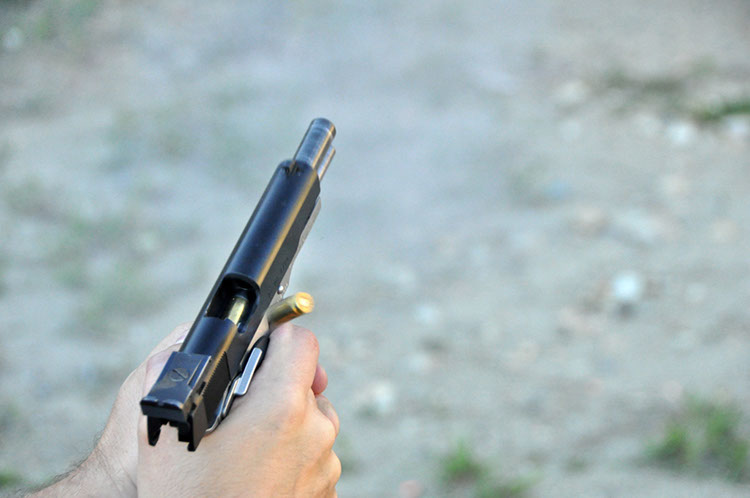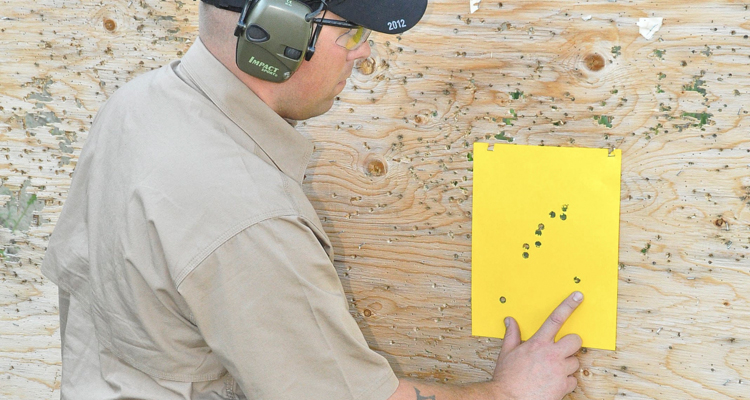
A few years ago, on a sunny long weekend, I took a couple of young fellows to the local outdoor shooting range. The objective was to teach them about handguns through a balance of shooting and coaching. As expected, we shared the firing line with other shooters. This made for an unexpected teaching opportunity, because after I showed them how to do something properly, they could sneak a glance to their left and see it done the wrong way. What we witnessed was nothing unusual; new shooters with the wrong guns and apparently no training. It's not much harder to coach a line of four shooters, so I gently offered assistance to these line-mates. I was politely declined, making another great teaching point for my young friends.
Within the firearm trinity of rifle, handgun and shotgun, I think the handgun is the most difficult to master. So, it's not surprising that many handgun shooters have difficulty reaching the skill level they'd like. Like any gun, the only way to get really good with a handgun is to spend time and ammo practicing the right technique. And since most handgun games measure speed as well accuracy, true handgun skill requires a dose of each. Of course, speed is relatively easy; it's speed with accuracy that's tough. So, I'm going to focus on accuracy here, mainly because I'm old school enough to believe the adage, "First you get good, then you get fast." With that in mind, here's what I see as the four most common mistakes new handgun shooters make in their attempt to shoot well.
Stance

Above your feet, the rest of your body should be in a relaxed, upright position with arms extended and forming an isosceles triangle. Lean forward slightly, putting a little more weight on the weak side foot. Do your best to avoid leaning backwards to compensate for the weight of the gun being held out front.

Grip

If you want to see examples of the wrong way to hold a handgun, there are plenty on television. Using the support hand to hold the wrist of the shooting hand is a popular one, as is the 'cup and saucer' method, where the support hand forms a cup and the shooting hand and the handgun butt are placed inside it. And, of course, the gangsta' sideways hold is always good for a laugh.

Hand strength also becomes a factor here. I've coached shooters who did not have the hand strength to pull the trigger on a double-action revolver. What do you do then? Any grip that works, is the answer. On double-action guns with long trigger pulls, sometimes the only thing that works is shifting the grip so much that the trigger falls on the second joint. I've even resorted to specifying two fingers on the trigger. Fortunately, these are rare exceptions.
Sight Alignment

Focusing naturally on the front sight, is one of those things that requires a lot of repetition and there is no better way to get it than by dry firing. To do this safely and effectively, just make sure your gun is unloaded and there is no live ammo anywhere within reach. Stick a target on a convenient wall and after establishing a stable stance and a solid grip, align the sights and drop the hammer. You won't hurt any quality centre-fire pistol by dry firing, but rimfires are another matter. As a rule they shouldn't be dry-fired because of potential firing pin contact with the edge of the chamber. Some high-end target .22's have a button or lever that can be engaged to allow for safe dry firing.
In many ways, dry firing is even better than live firing, because there is no recoil to mask what you're doing wrong. If you're watching the sights—as you should be—any imperfections in stance, grip or trigger control will be immediately evident when the gun goes click. One old trick you may want to try is to balance a dime on the front sight of your handgun and then execute a dry-fired shot. The dime shouldn't move when the hammer falls.
Trigger Control

If your shots start going low, you can bet that trigger control is to blame. There's a natural tendency to push back against recoil and in so doing dip the muzzle of a handgun. We call it flinch, and it's probably the number one problem new shooters have. And they have no idea they're doing it, because the movement is masked by the gun's recoil. The best drill I know of to unlearn this habit and master trigger control uses dummy ammunition. Mixing dummy rounds in with live ammo and paying attention to what the front sight does when the gun unexpectedly goes click instead of boom, is an educational experience all handgunners need to do regularly.

Whether you shoot competitively or are a solitary shooter, it's extremely difficult to coach and correct yourself. I always suggest finding some professional level handgun training and spending the money to take a class or two. It's well worth the dollars involved and will yield a substantial improvement in your shooting.
But what level of skill should you be striving for? Here's a standard you can test yourself against. Using letter-size cardstock as a target, a beginner should quickly learn to keep all his shots on the paper at five meters. When they form a tight cluster, move back to fifteen metres and try again. You should be able to keep ten consecutive shots on that 8.5X11" paper. If you can do the same thing at twenty-five metres you're a good shot with a handgun. When you can do it at fifty meters you’re a excellent shot. And when you can do it at fifty metres, in less than ten seconds, you should move to the USA and turn pro. Good Luck!